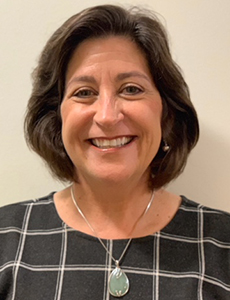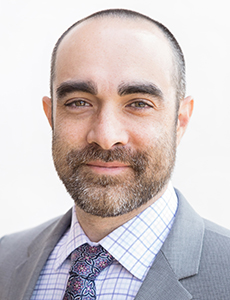Sponsored Content by CorVel
3 Ways to Proactively Protect Injured Workers from Opioid Dependence

In recent years, the workers’ compensation industry has made great strides reducing opioid prescriptions for injured workers. According to the CDC, the percentage of all workers’ comp claims with prescriptions that included at least one opioid dropped from 55% in 2012 to 44% in 2016. That number is certainly still falling thanks to stricter prescribing guidelines and more proactive patient and prescriber interventions, but it is still too high.
The industry learned the hard way that keeping opioids out of the picture altogether is the best way to avoid addiction or dependence, stalled recovery and overdose fatalities. Once this powerful painkiller is prescribed, things can unravel quickly.
“Data indicates that once opioid usage goes on beyond the 10-day mark, the chances of abuse or addiction are so much higher,” said Jill Falb, Vice President, Pharmacy Services, CorVel.
“Once someone has been on an opioid for an extended period, it becomes exponentially more difficult to wean them off. A few years ago, we put a stake in the ground and said, ‘We need to stop usage before it gets to that critical stage.’ ”
Falb and her pharmacy team at CorVel execute early opioid intervention at three key stages:
1) Setting Expectations in Nurse Triage

Jill Falb, Vice President, Pharmacy Services, CorVel
Around-the-clock access to triage nurses and telehealth physicians, can reduce the length and cost of workers’ comp claims simply by connecting injured workers to care faster. But it’s also a critical opportunity to assess pain and set appropriate expectations for pain management.
Triage nurses use a proprietary pain scale based on objective criteria such as activity level and somatic symptoms. They may ask, for example, whether pain is accompanied by nausea or sweating. Or whether it is impeding the caller’s ability to perform basic tasks like standing, turning or grasping.
The assessment also uses non-clinical adjectives that are meaningful to the caller, like “throbbing,” “dull,” “achy” and “stabbing” — rather than the traditional 1-10 scale. This helps the injured worker more accurately describe their pain so that nurses can determine an appropriate level of care.
“Depending on injury severity, the nurse may recommend self-treatment like ice, rest or compression. If further care is needed, they’ll determine whether a telehealth or an in-person visit is appropriate,” Falb said. “Currently, our telehealth physicians do not prescribe opioids through the telehealth program.”
“But from the beginning, they are setting expectations around pain, suggesting options beyond opioids,” added Charles Richards, Director of Analytics, CorVel.
“Most injured workers have never been through the workers’ comp system before, so knowing what to expect goes a long way in easing anxiety and setting that patient up for success.”
2) Adhering to Strict Guidelines at the Point of Prescription

Charles Richards, Director of Analytics, CorVel
In 2016, many states began adopting more restrictive clinical guidelines for opioid prescriptions, encouraging providers to exhaust non-opioid therapies first, shrink the initial day supply and dosages, and implement more aggressive monitoring procedures.
“Our formulary is based on CDC recommendations combined with state-specific guidelines. We look to limit opioid prescriptions to a three-day supply for acute pain and require prescribers to check their state’s prescription monitoring program (PMP) database before writing a script,” Falb said.
“If a prescriber goes outside of those guidelines, we immediately reach out to find out why. We have to verify that their justification is sufficient and that they have discussed the associated risks and set clear goals and expectations with the injured worker.”
Direct outreach to the dispensing pharmacy is also critical whenever a non-formulary medication is prescribed. This is another chance to verify that the drug type, dosage and course are appropriate for the injury and to gather additional information about the patient’s medication history that may not have been captured by other records.
“We have a very restrictive formulary, because we want that phone call from the pharmacy. It creates more opportunities to discuss the implications of a particular medication — before it’s dispensed — and stop it if there is not enough evidence to support it,” Falb said.
3) Acting on Alerts Flagged During Daily Monitoring
It is critical to have total visibility into pharmacy usage, including data from both the PBM and non-PBM sources, to understand prescribing patterns and potential red flags for each patient.
Real-time updates and reports on long-term trends both help to inform interventions that could halt a substance abuse issue before it worsens. Things like the use of Narcan or opioid/muscle relaxant/benzodiazepine combinations, for example, demand immediate action.
Daily reports on these two factors enable the clinical team to initiate an intervention right away.
Less urgent but still troubling trends are captured through clinical modeling that synthesizes patient information with clinical guidelines and other benchmarking data to create a full picture of pharmacy risk.
“The primary thing we do is generate and track a pharmacy risk score for each injured worker, which is based on morphine milligram equivalents (MME),” Richards said. “Any MME above 90 will trigger an alert for intervention in our integrated platform.”
Days supply is another key data point. The goal for new injuries is to keep days supply under 10; for long-tail claims where opioids have been used continuously, anything over 120 will also trigger an alert.
Other red flags include continuous opioid usage beyond six months, more than three brand prescriptions, more than two muscle relaxers, antidepressants or antipsychotics, any fentanyl at all, methadone use, and multiple prescribers for a single patient. Most importantly, all these alerts come with clear action steps.
“With one click, the clinical team can set things in motion by alerting the case manager and the medication review team, scheduling a call, or requesting more information,” Richards said.
A Hands-On Approach Drives Better Outcomes
These proactive measures and quick interventions have positively impacted the trajectory of opioid prescriptions and overall patient safety.
“Before 2017, the average day supply of an opioid prescription was around 28 days. With implementation of 24/7 nurse triage combined with our high touch clinical pharmacy model, that average dropped to less than five days last year,” Richards said. “On new programs, we’ve seen a 12% reduction in opioid usage after one year just implementing some more proactive, hands-on controls.”
A high-touch model powered by clinical experts is the key to this success. Whether it’s the triage nurse or the call-center pharmacist communicating with prescribers, the clinical team at CorVel has the experience and credibility to drive meaningful change.
“I always look at our team as a bunch of detectives pulling information from the pharmacy, the PBM, the case manager and our own analytics team, and then packaging it in a way that makes sense for the adjuster,” Falb said. “Our mantra is to always provide the claims adjuster with what they need to make good decisions, so the clinical team has to be able to make connections and spot issues early.”
Technology plays a major role as well.
CorVel’s integrated claims management platform — CareMC Edge — provides a central location for claim-related data, bill review information, and pharmacy case management. Clinical staff and adjusters can access the latest data, interact with each other, and act on alerts all in the same place.
Streamlining the claims management process ultimately translates to quicker, higher quality care. The right intervention at the right time can help injured workers get better and back to work faster without the risk of opioid dependence.
To learn more, visit https://www.corvel.com/.
This article was produced by the R&I Brand Studio, a unit of the advertising department of Risk & Insurance, in collaboration with CorVel. The editorial staff of Risk & Insurance had no role in its preparation.










